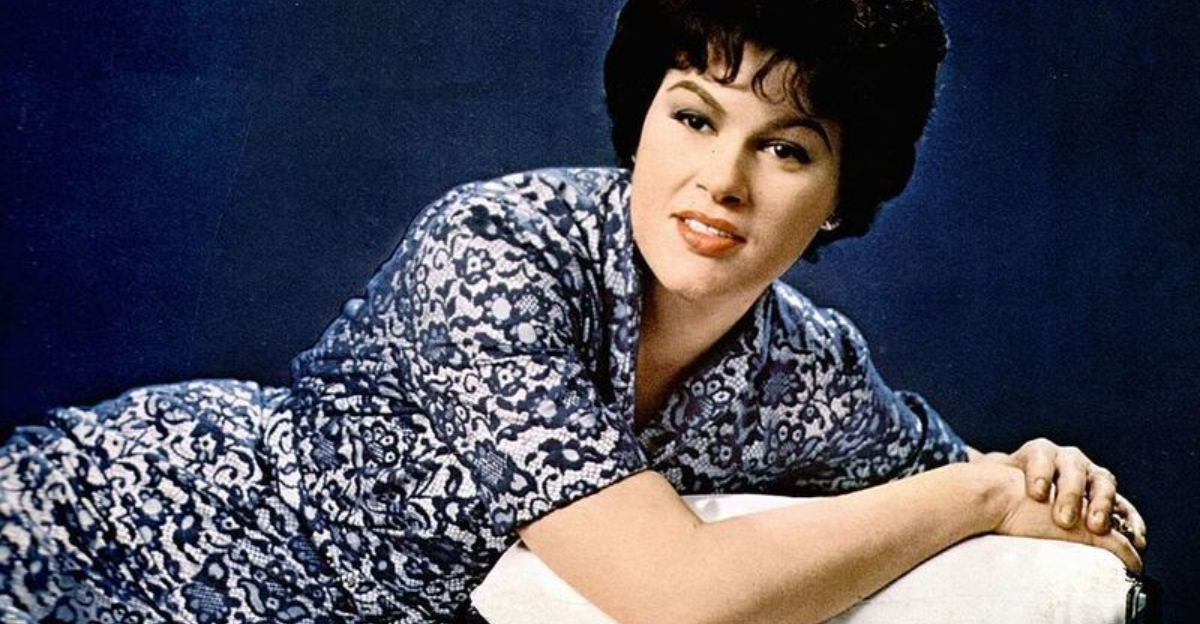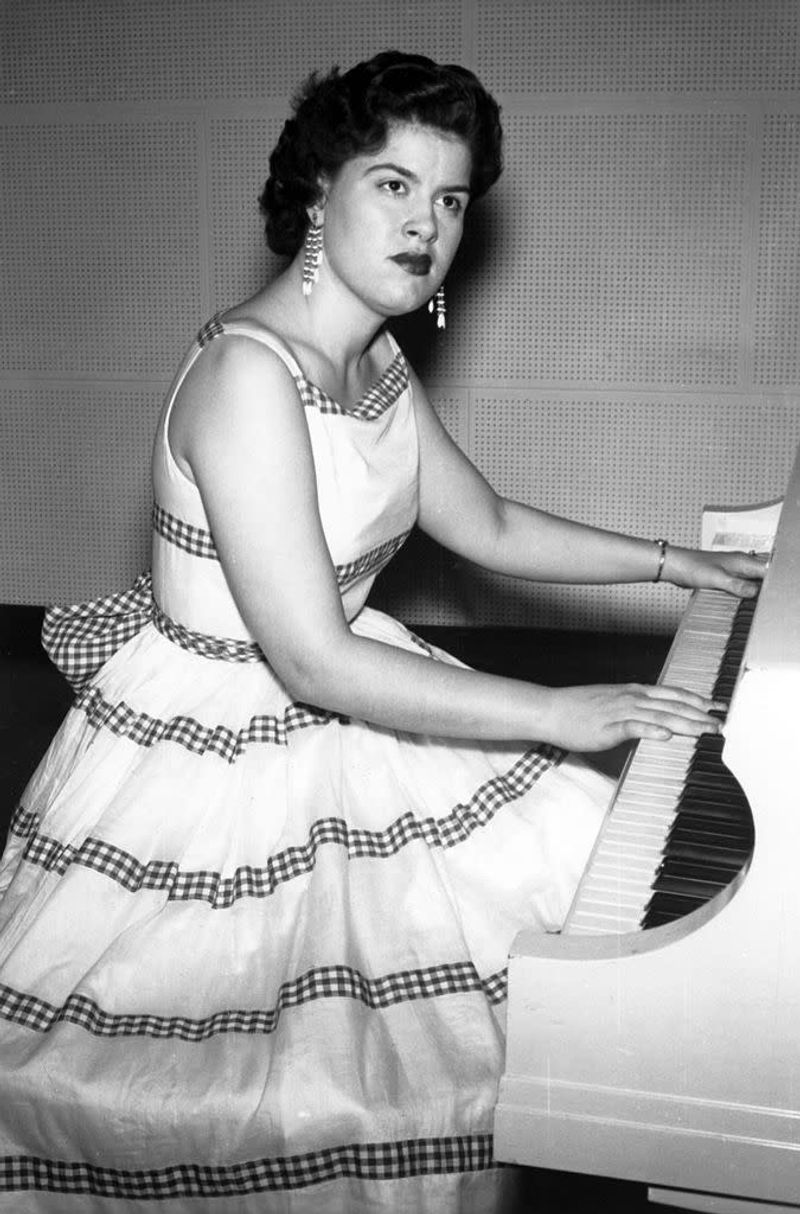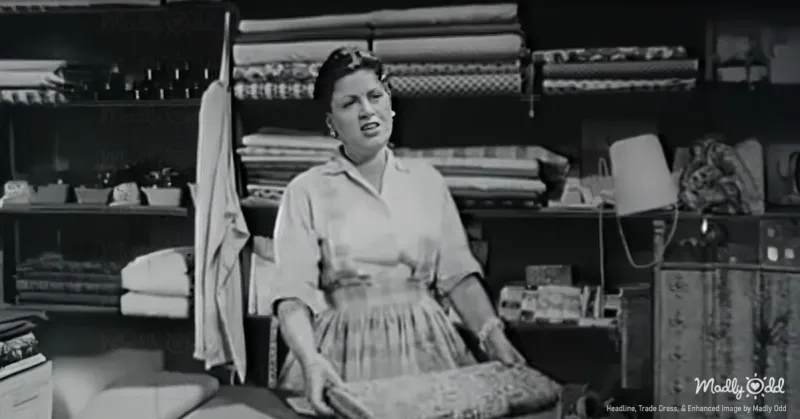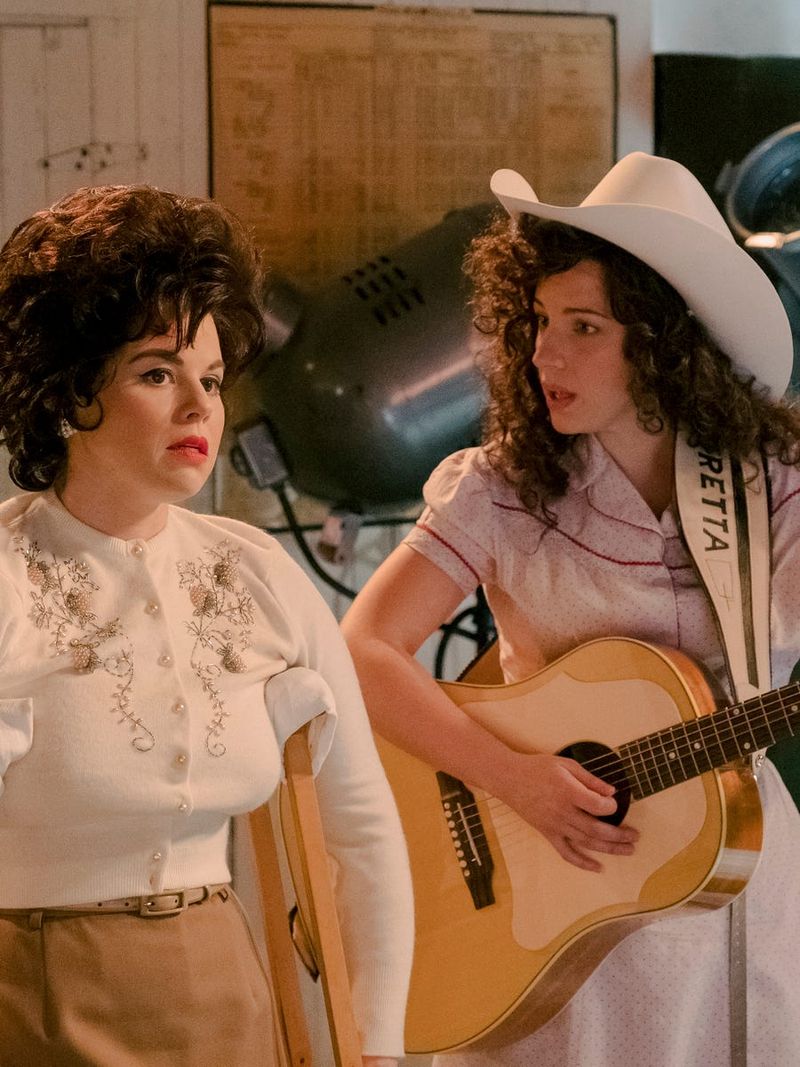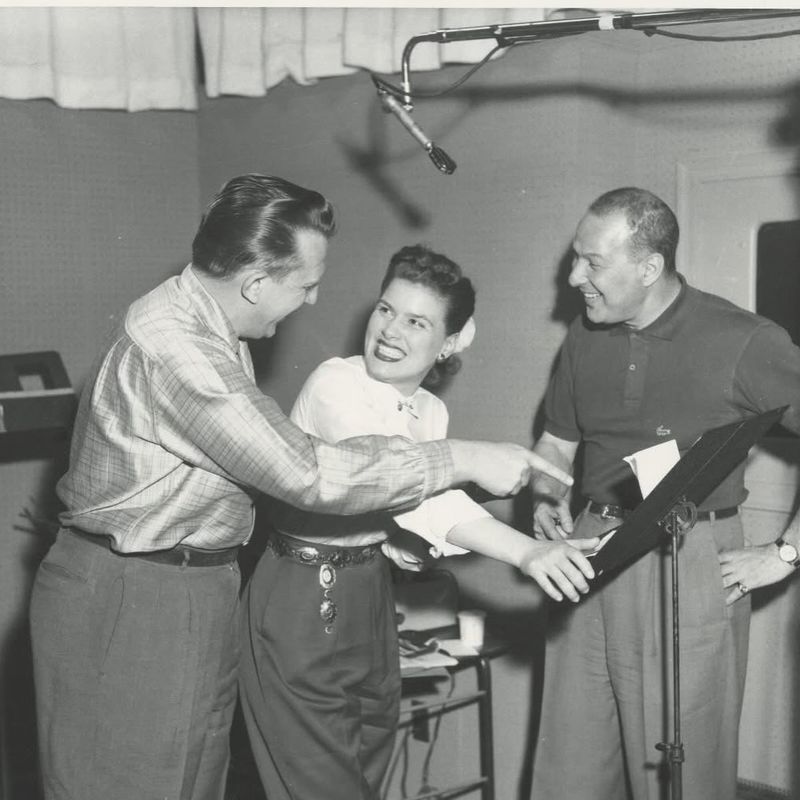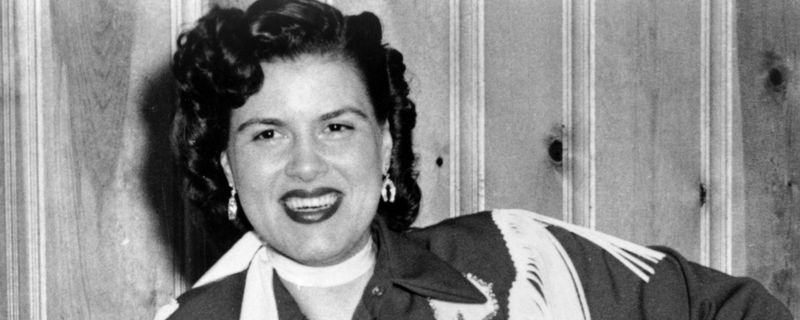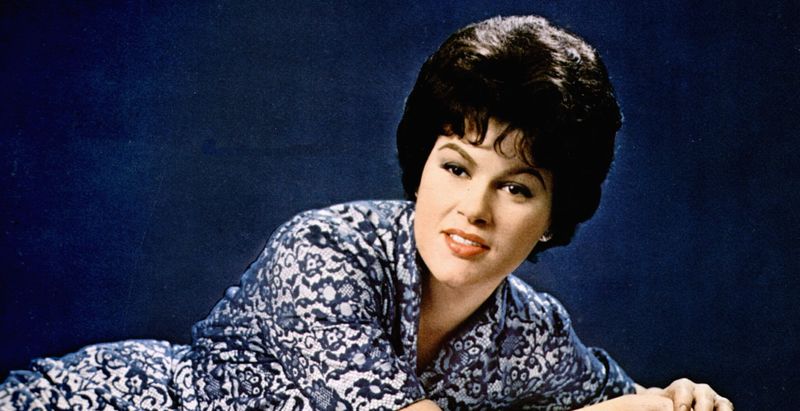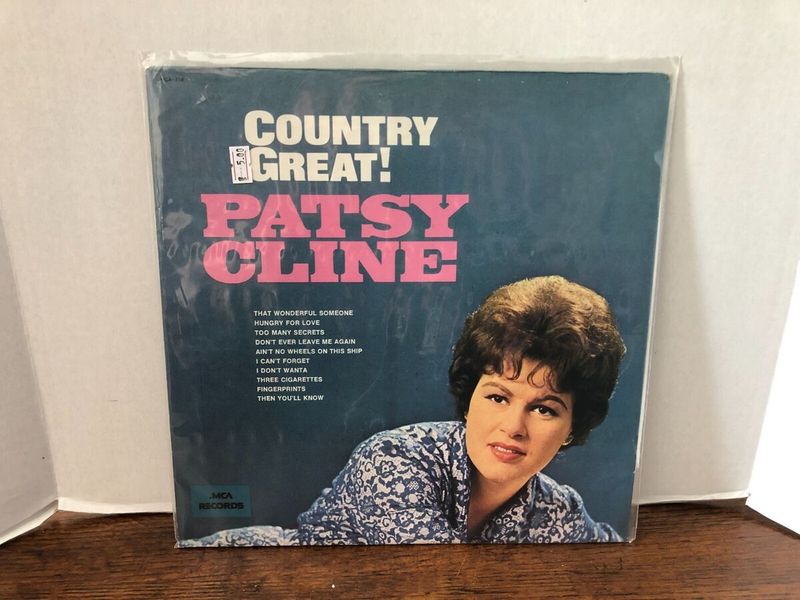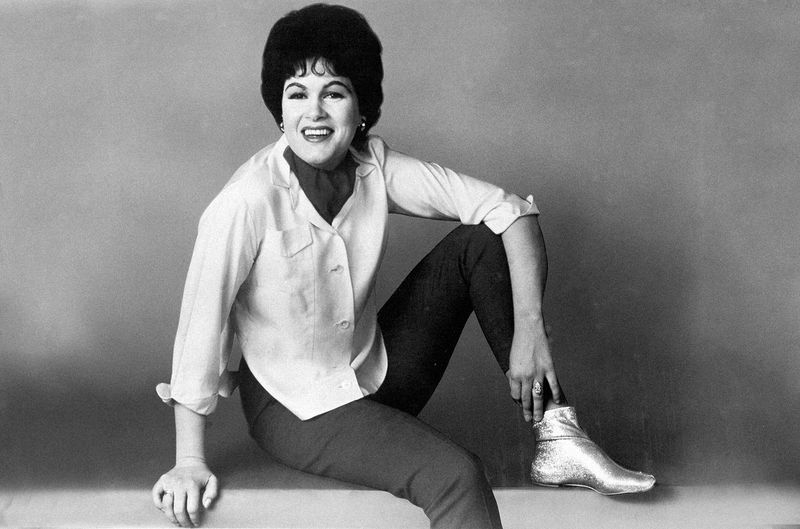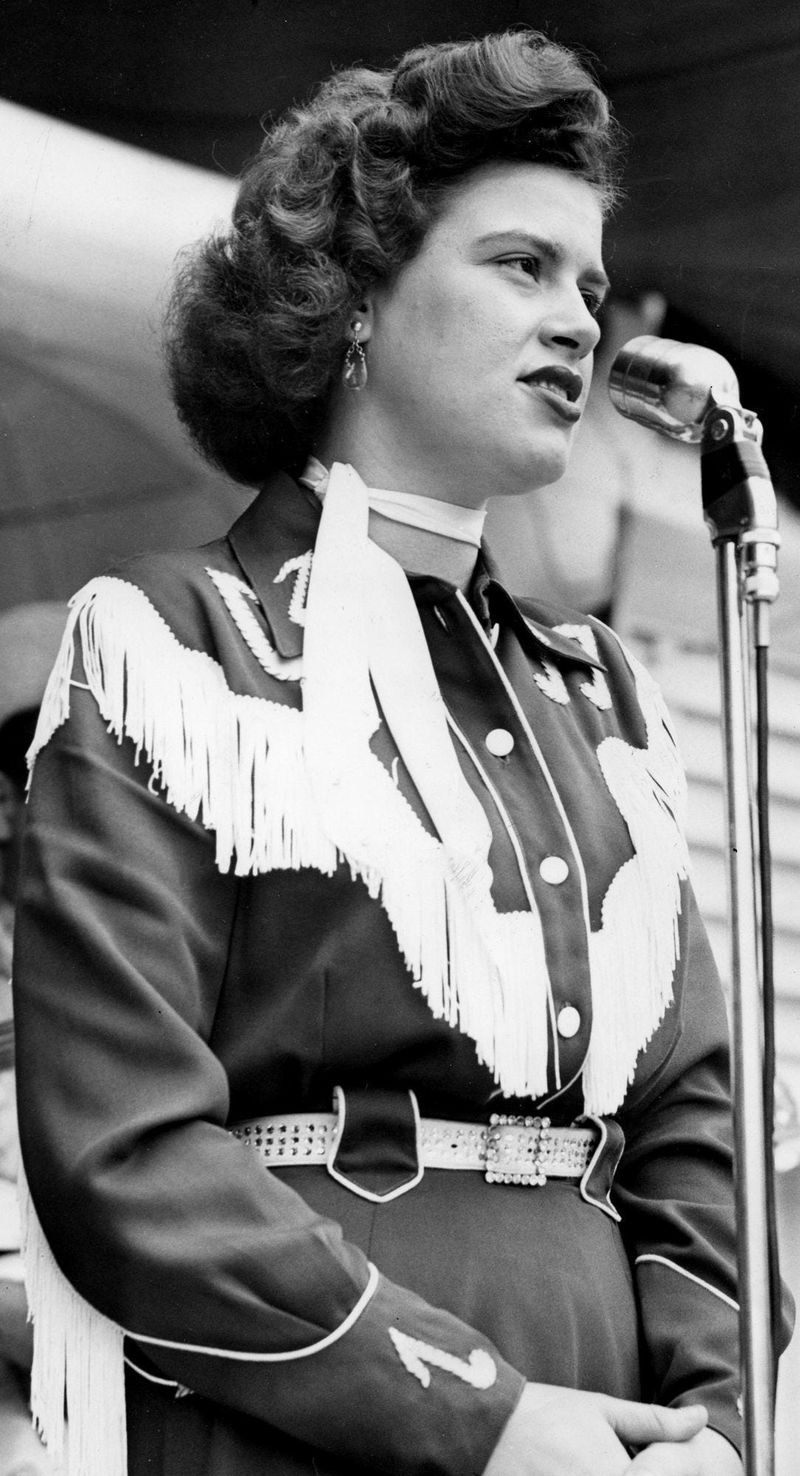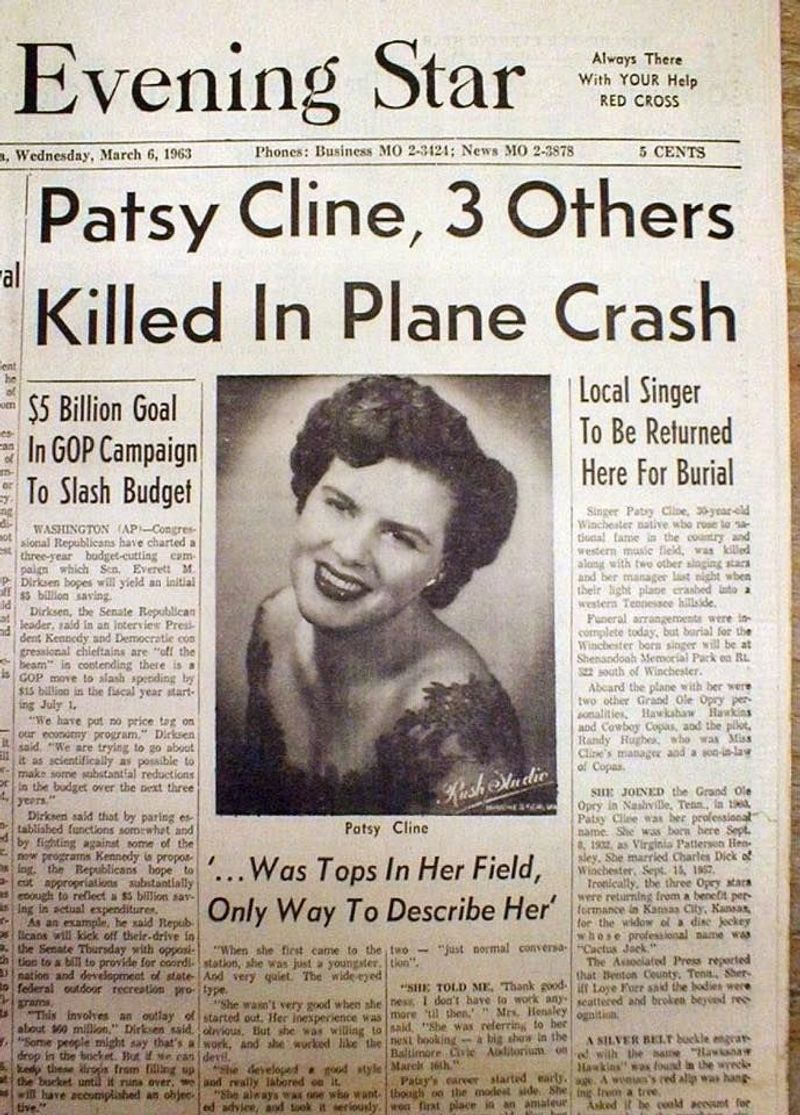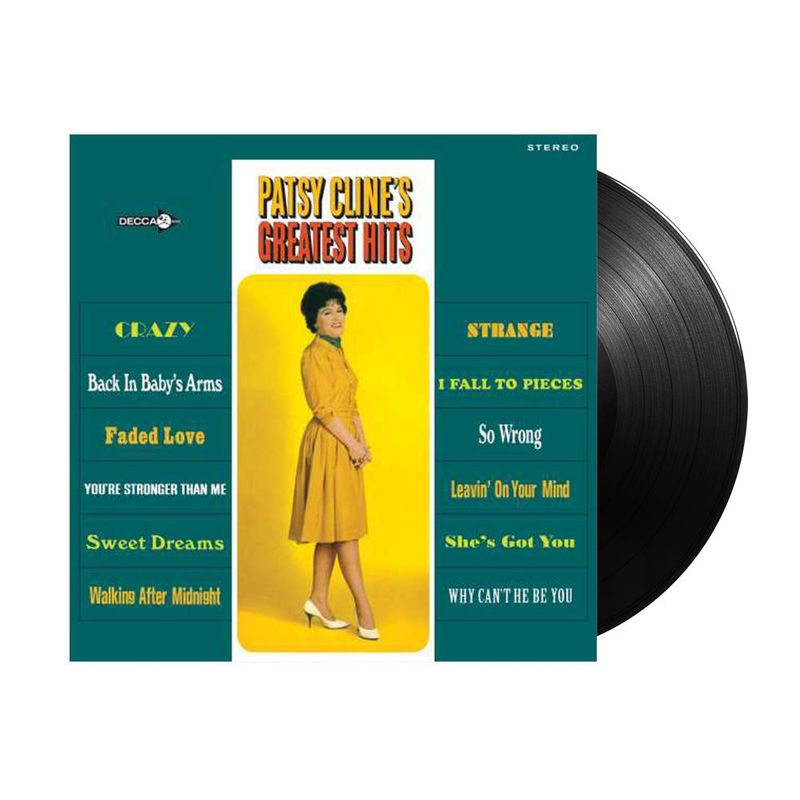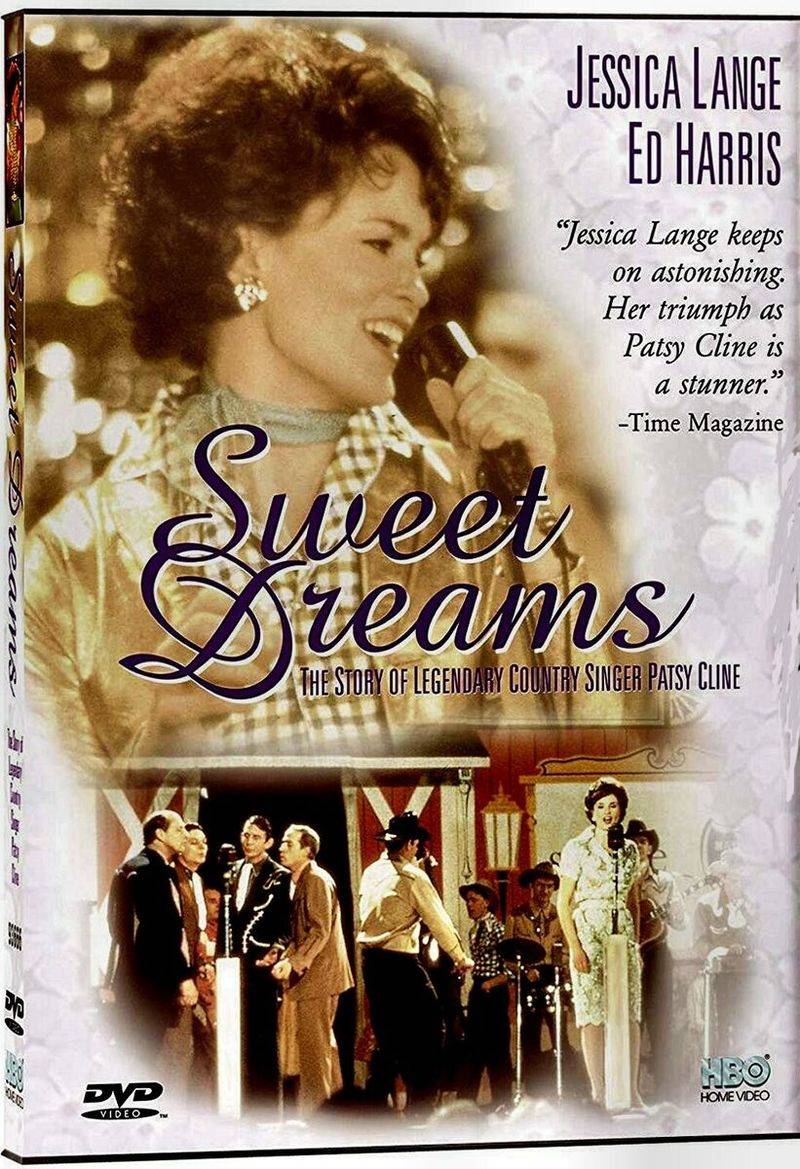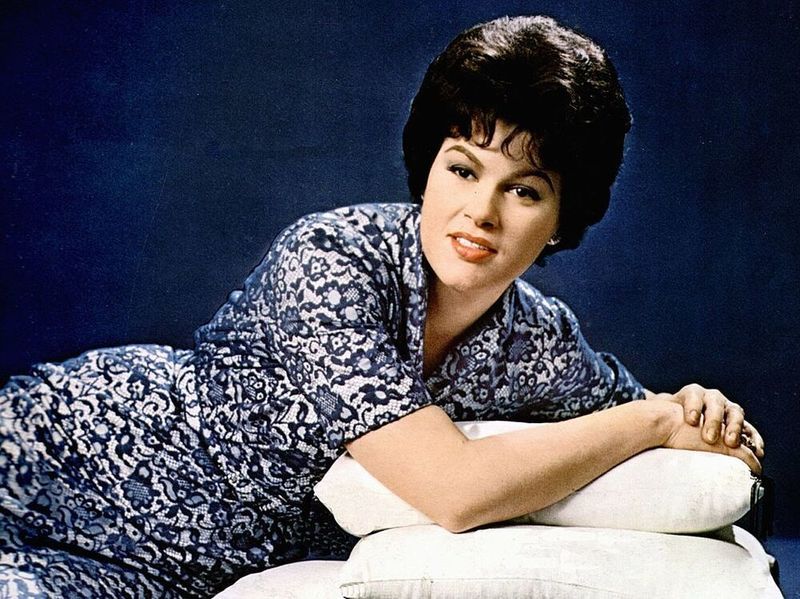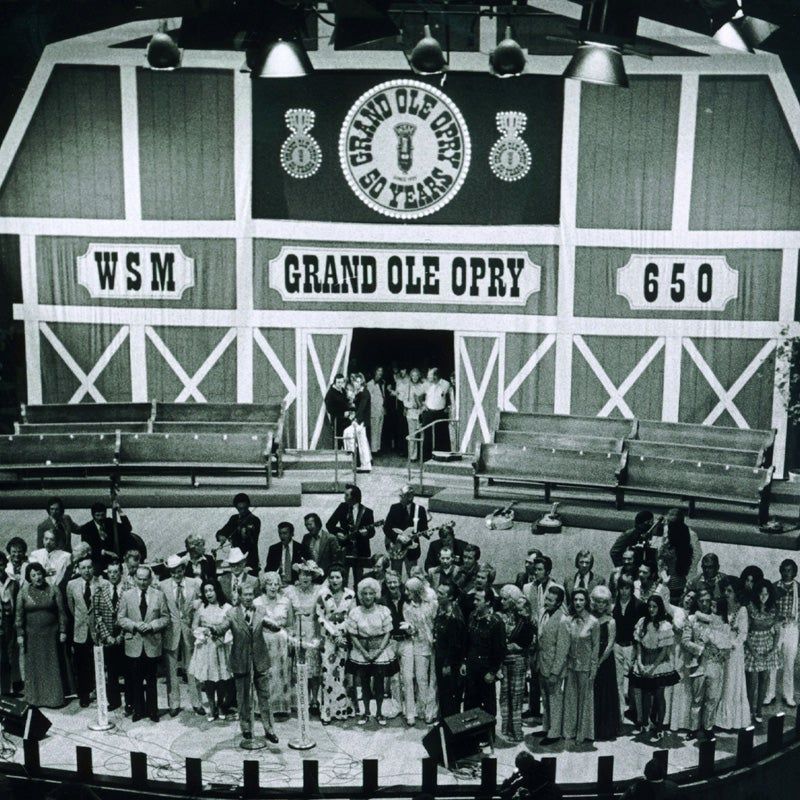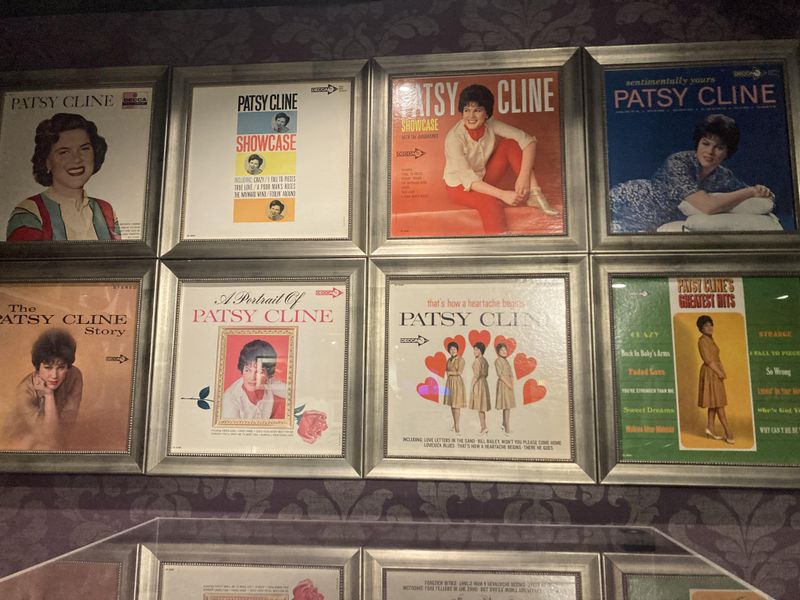Patsy Cline remains one of country music’s most influential voices more than half a century after her tragic death. Her rich, emotional vocals and crossover appeal transformed the country music landscape at a time when few women found success in the industry. From her humble beginnings to her meteoric rise and untimely passing, Patsy’s remarkable story continues to captivate music lovers across generations.
1. Born Virginia Patterson Hensley
Before she became the legendary Patsy Cline, she entered the world as Virginia Patterson Hensley on September 8, 1932, in Winchester, Virginia. Her stage name combined a nickname derived from her middle name with the surname of her first husband, Gerald Cline, whom she married in 1953.
The marriage didn’t last, but the name certainly did. Many fans don’t realize her iconic stage name wasn’t her birth name at all.
Virginia’s transformation into Patsy marked just the beginning of her remarkable journey from small-town girl to country music royalty.
2. She Was a Self-Taught Musician
Musical education was a luxury Patsy’s family couldn’t afford during the Great Depression. Undeterred, she developed her extraordinary talents through sheer determination and natural ability.
At age 8, she taught herself to play piano by ear after her father abandoned the family. This early musical independence shaped her distinctive approach to singing and performance.
Her untrained yet powerful contralto voice broke conventional rules, allowing her to create her signature emotional delivery. Without formal constraints, Patsy developed a unique style that blended country authenticity with pop sensibilities—all guided by her remarkable instincts.
3. Her Big Break Came from a TV Show
January 21, 1957 marked the turning point in Patsy’s career when she appeared on Arthur Godfrey’s Talent Scouts, a popular television talent competition similar to today’s American Idol. Her performance of “Walkin’ After Midnight” captivated the audience and judges alike.
The applause meter—used to measure audience reaction—went off the charts during her performance. Overnight, she became a national sensation.
The song quickly climbed both country and pop charts, selling over 900,000 copies. This television moment transformed Patsy from a regional performer to a household name, proving the growing power of television in creating music stars.
4. She Was a Pioneer for Women in Country Music
The Nashville music scene of the 1950s was dominated by men, with women rarely headlining shows or commanding the same respect as their male counterparts. Patsy shattered those barriers through talent and sheer force of will.
She refused to be relegated to the status of a “girl singer” and demanded equal treatment and pay. Her bold fashion choices—elegant dresses and cowboy outfits alike—created a distinctive image that challenged the modest, subdued expectations for female performers.
Her success opened doors for future generations of women in country music, from Loretta Lynn to modern stars who cite her as an inspiration.
5. She Recorded “Crazy” in One Take
August 21, 1961 marked a legendary moment in recording history. Despite still recovering from her car accident and being unable to hit high notes as easily, Patsy arrived at the studio determined to record “Crazy,” a song written by a then-unknown Willie Nelson.
The session musicians had spent hours trying to perfect the complex arrangement. When Patsy’s turn came, she delivered a flawless, emotionally perfect rendition in just one take.
Producer Owen Bradley was reportedly stunned by her masterful performance. This single-take recording went on to become her signature song and one of the most recognized country music performances of all time.
6. A Near-Fatal Car Crash Changed Her Life
On June 14, 1961, Patsy’s career nearly ended when her car collided head-on with another vehicle in Nashville. The impact threw her through the windshield, causing severe injuries including a broken hip, dislocated shoulder, and a significant jagged forehead gash.
Doctors initially doubted she would survive. During her two-month hospital stay, fans sent thousands of letters and flowers.
The accident permanently altered her appearance, requiring her to use wigs and heavy makeup to cover scars. Despite these challenges, she returned to performing within six months—showing remarkable resilience that added new emotional depth to her already powerful vocals.
7. She Wore Wigs After the Accident
The devastating car crash left Patsy with a significant forehead scar that ran from her hairline almost to her eyebrow. Rather than let this visible reminder affect her confidence, she embraced wigs as both a practical solution and a fashion statement.
Her collection of hairpieces became part of her glamorous image. She often chose styles that were more sophisticated than her natural hair had been.
Friends recalled how Patsy would joke about her “hat hair” and casually adjust her wigs during conversations. This ability to adapt with grace and humor revealed her resilience and determination to maintain her public image despite private struggles.
8. She Was Friends with Loretta Lynn
When a young, nervous Loretta Lynn first performed at the Grand Ole Opry in 1960, Patsy took her under her wing. Their friendship blossomed despite being at different stages in their careers—Patsy already a star, Loretta just beginning.
Patsy taught Loretta practical aspects of showbusiness, from stage presence to dealing with promoters. She even gave Loretta hand-me-down stage clothes when the newcomer couldn’t afford her own.
After Patsy’s death, Loretta named a daughter after her friend. Their relationship was later immortalized in the 1980 film “Coal Miner’s Daughter,” showing how Patsy’s generosity extended beyond music to genuine mentorship.
9. She Was One of the First Country Artists to Cross Over to Pop
In the early 1960s, the line between country and pop music seemed impenetrable. Patsy’s rich, emotional voice and producer Owen Bradley’s “Nashville Sound” arrangements created something revolutionary—country music with mainstream appeal.
Songs like “I Fall to Pieces” and “Crazy” climbed both country and pop charts simultaneously. This crossover success wasn’t accidental but reflected Patsy’s versatility and Bradley’s innovative production.
Her ability to connect with listeners across musical preferences established a blueprint for future crossover artists. Without sacrificing her country roots, she expanded the genre’s audience and commercial potential, forever changing the music industry landscape.
10. She Was the First Female Solo Artist Inducted Into the Country Music Hall of Fame
Ten years after her death, Patsy received country music’s highest honor when she was posthumously inducted into the Country Music Hall of Fame in 1973. The bronze plaque bearing her likeness made history—she was the first female solo artist ever to receive this recognition.
Her induction acknowledged not just her commercial success but her lasting influence on the genre. Only the eighth woman overall to be inducted, Patsy’s early inclusion highlighted her extraordinary impact.
The ceremony featured emotional tributes from colleagues who had survived her. This groundbreaking recognition paved the way for future generations of female artists to receive their rightful place in country music’s pantheon.
11. She Recorded Only Three Studio Albums
Despite her enormous influence, Patsy’s studio album catalog is surprisingly small. Her entire official discography consists of just three albums released during her lifetime: her self-titled debut in 1957, “Showcase” in 1961, and “Sentimentally Yours” in 1962.
This limited output makes her impact all the more remarkable. Each album showcased her evolving artistry, from the more traditional country sound of her debut to the polished Nashville Sound of her later work.
After her death, dozens of compilation albums and previously unreleased recordings have been issued. The quality of these posthumous collections speaks to how much remarkable material she created in her brief recording career.
12. Her Final Recording Session Was Eerie
On February 4, 1963, just one month before her death, Patsy entered Bradley’s Barn studio in Nashville for what would be her final recording session. The atmosphere was reportedly unusually somber and reflective.
Among the songs recorded that day was “I’ll Sail My Ship Alone,” which contained hauntingly prophetic lyrics about departure. Engineers and musicians present later commented on an unusual quality in her voice—a depth and poignancy that seemed almost prescient.
Producer Owen Bradley recalled that Patsy hugged him tightly before leaving, something she had never done before. These final recordings were released posthumously, giving fans a last glimpse of her evolving artistry.
13. She Predicted Her Own Death
In the months before her fatal plane crash, Patsy made several eerily prescient comments about her mortality. After surviving both the 1961 car crash and a previous near-miss automobile accident, she told close friend Loretta Lynn: “Honey, I’ve had two bad ones. The third one will either be a charm or it’ll kill me.”
She began giving away personal items to friends, as if preparing for departure. Multiple associates reported she had expressed a strange certainty that she wouldn’t live to see 30.
Perhaps most chilling, she wrote letters to family members with instructions to be opened “in case of my death.” These premonitions have become part of the mystique surrounding her legendary status.
14. She Died in a Plane Crash at 30
On March 5, 1963, Patsy boarded a small Piper Comanche aircraft after performing at a benefit concert in Kansas City. Despite warnings about dangerous weather conditions, the plane took off with Patsy and fellow country stars Cowboy Copas and Hawkshaw Hawkins aboard.
The pilot, Patsy’s manager Randy Hughes, was not qualified for instrument flying. In the heavy rain and fog, the plane crashed into the side of a mountain near Camden, Tennessee.
The impact was so severe that it took searchers nearly a day to locate the wreckage. All four occupants died instantly. Patsy was just 30 years old, her meteoric career cut tragically short at its peak.
15. Thousands Attended Her Funeral
Patsy’s funeral on March 10, 1963, became one of the largest public gatherings Winchester, Virginia had ever seen. An estimated 25,000 heartbroken fans and music industry figures lined the streets to pay their respects, bringing the small town to a complete standstill.
The sheer scale of mourners demonstrated her extraordinary impact on American culture. Country stars including Ernest Tubb, Roy Acuff, and Grandpa Jones served as honorary pallbearers.
Flowers arrived from across the nation, including arrangements from Elvis Presley and the Beatles. She was laid to rest at Shenandoah Memorial Park beneath a bronze plaque reading “Virginia H. Dick,” using her married name rather than her stage name.
16. Her Music Gained Even More Fame After Her Death
The tragic circumstances of Patsy’s death created renewed interest in her music. “Sweet Dreams,” released shortly after the crash, became a massive posthumous hit and has since become one of her signature songs.
Her record label, Decca, continued releasing previously recorded material. Sales of these posthumous releases often exceeded those achieved during her lifetime.
The 1967 compilation “Greatest Hits” became one of the longest-charting albums in any genre, spending 722 weeks on the Billboard Country Album charts. It has sold over 10 million copies, introducing her timeless voice to generations who were born long after her passing.
17. Jessica Lange Played Her in a Biopic
The 1985 film “Sweet Dreams” brought Patsy’s story to the big screen, with acclaimed actress Jessica Lange portraying the country legend. Lange’s committed performance earned her an Academy Award nomination, though she didn’t sing in the film—Patsy’s original recordings were used instead.
The movie focused on Patsy’s turbulent relationship with her second husband, Charlie Dick, played by Ed Harris. While taking some dramatic liberties, it captured her fighting spirit and determination.
Director Karel Reisz’s film introduced Patsy to a new generation of fans who discovered her music through the biopic. Though some family members criticized certain portrayals, the film cemented her iconic status in American cultural history.
18. She Was Known for Her Generosity
Behind Patsy’s star power was a remarkably generous spirit. Colleagues consistently recalled how she would lend money to struggling musicians without expectation of repayment. When new artists came to Nashville, she often provided meals, housing, and career guidance.
Despite her own humble beginnings, she was known to purchase stage clothes for performers who couldn’t afford them. Her husband Charlie later revealed she kept a special fund specifically to help fellow artists in need.
This generosity extended to fans as well. She would spend hours after shows signing autographs and talking with admirers, treating everyone with the same warmth regardless of their status.
19. She Was a Member of the Grand Ole Opry
January 9, 1960 marked a milestone in Patsy’s career when she was inducted as a member of the Grand Ole Opry, country music’s most prestigious institution. Her invitation came after years of performing as a guest artist and represented formal acceptance by the Nashville establishment.
The Opry’s notoriously conservative management had initially been reluctant to embrace her more contemporary sound. Her induction signaled a shifting attitude in country music toward innovation.
Patsy performed regularly on the Opry’s famous stage, often receiving standing ovations. Today, a commemorative spotlight remains permanently lit on the Opry stage in her honor—a tribute only she and Hank Williams have received.
20. Her Legacy Lives On
More than half a century after her death, Patsy’s influence continues to shape country music. Artists from Reba McEntire and Trisha Yearwood to Kacey Musgraves and Maren Morris cite her as a primary influence on their vocal styles and career paths.
In 2019, she was awarded a posthumous Grammy Lifetime Achievement Award, recognizing her enduring impact. The Patsy Cline Museum opened in Nashville in 2017, drawing visitors from around the world.
Her former home in Winchester, Virginia has been preserved as a historic landmark. Perhaps most significantly, her recordings continue to sell millions of copies annually, introducing her incomparable voice to new generations of listeners who find her emotional authenticity as powerful today as it was in the 1960s.
